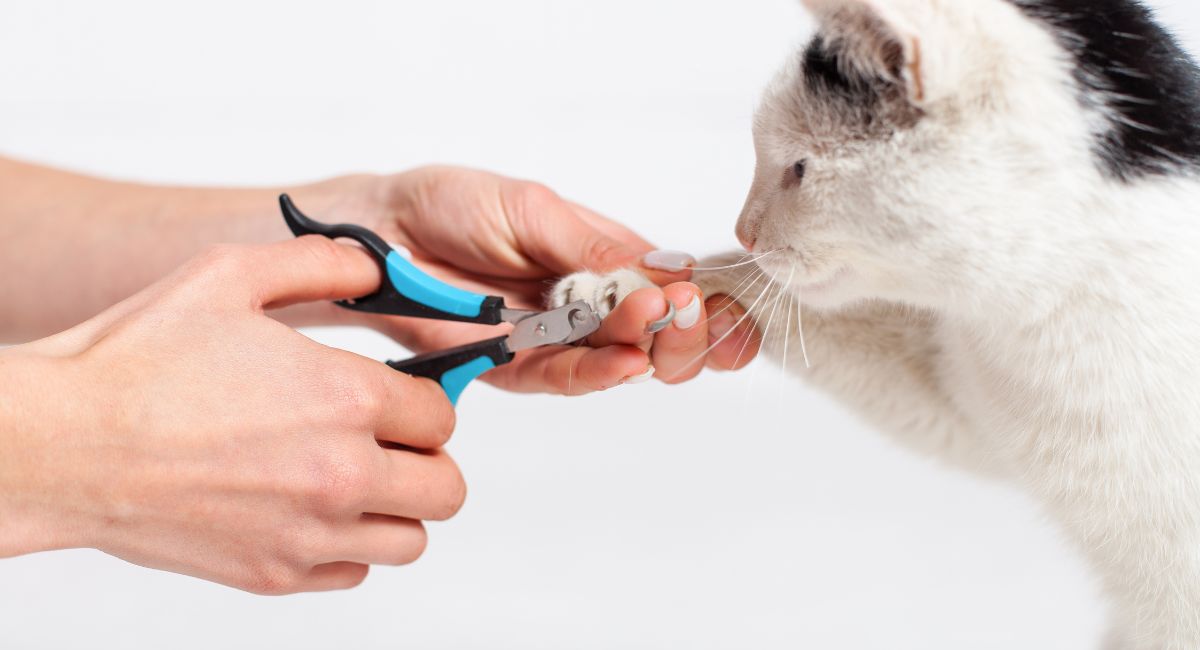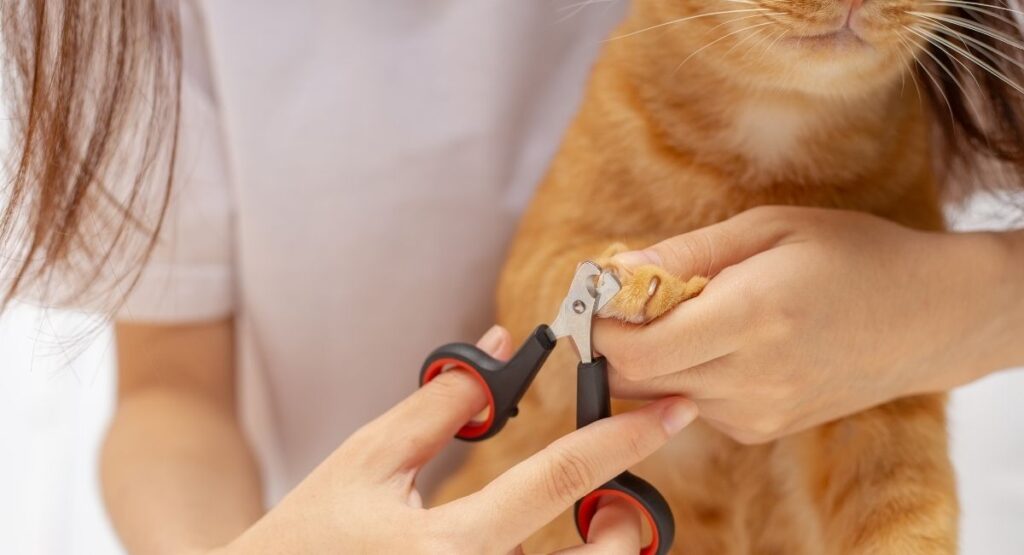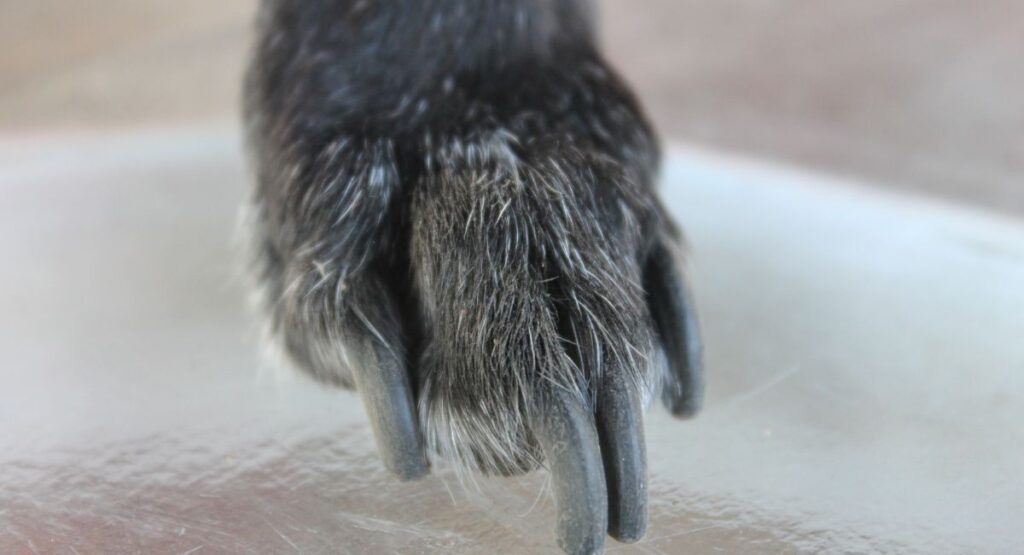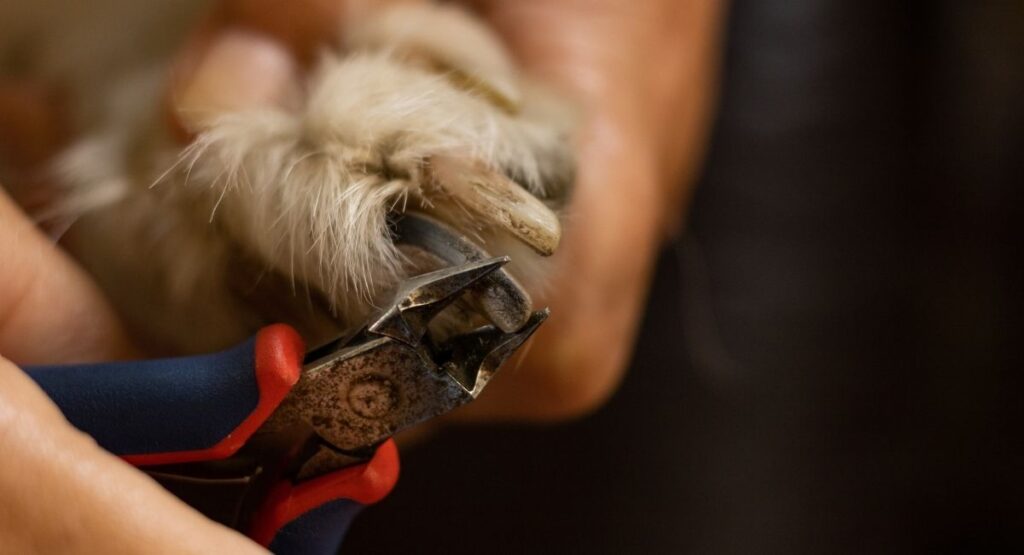Now Reading: How to Trim Cat Nails Without Getting Scratched
- 01
How to Trim Cat Nails Without Getting Scratched

How to Trim Cat Nails Without Getting Scratched
Let’s be real—just the thought of trimming your cat’s nails feels like you’re signing up for a battle you probably won’t win.
You’re armed with a clipper, maybe a towel, and a prayer. Meanwhile, your cat’s staring at you like you’ve committed betrayal. But don’t worry—you’re not alone, and learning how to trim cat nails doesn’t have to be a warzone.

Whether you’re a brand-new cat parent or someone who’s tried (and failed) before, this blog walks you through how to trim cat nails safely, easily, and without earning battle scars.
Why Trimming Cat Nails Even Matters
You might be thinking, “But my cat uses a scratching post!” That’s great, but it’s not enough. Regular nail trims:
- Prevent painful overgrowth and ingrown nails
- Protect your furniture, curtains, and skin
- Keep your cat from accidentally injuring themselves (or you)
- Help older or indoor cats walk more comfortably

So, let’s get into the “how.”
The Tools You’ll Need (Don’t Worry, It’s a Short List)
Before we talk claws, get your gear ready:
- Cat-specific nail clippers (not human ones)
- Styptic powder (just in case you cut too close to the quick)
- Towel (optional, for extra squirmy cats)
- Treats (aka bribes)
Remember: Clipping cat’s claws is about technique—not strength.
How to Trim Cat Nails: The Step-by-Step Method
Here’s a simple, foolproof process that works even if your cat hates being handled:
Step 1: Pick the Right Time
Catch your cat when they’re relaxed—after a meal, or while they’re napping in a sunny spot. Avoid playtime or zoomie hours.
Step 2: Handle Their Paws Often
Start by touching and gently pressing their paws regularly without trimming. It gets them used to the sensation. Do this for a few days before the real trim.
Step 3: Find the Sweet Spot
Gently press on the paw pad until the nail extends. Look for the translucent part—that’s safe to trim. Avoid the pink area (the quick), which contains nerves and blood vessels.
Step 4: One Claw at a Time
Trim only the sharp tip. Be confident but gentle. If your cat gets fussy, stop after one or two nails. It’s okay to spread it out over a few days.
Step 5: Treat + Praise
Even if you only get one paw done, reward your cat. Give them a treat, a cuddle, or some playtime. Positive reinforcement = easier trims next time.
You May Also Love To Read: My Dog Ate Chocolate But Is Acting Fine: What’s Next?
How Often to Trim Cat Nails? Let’s Break It Down

One of the top questions from new pet parents is: how often to trim cat nails?
On average:
- Indoor cats: Every 2–3 weeks
- Outdoor cats: Less often, as climbing and scratching wear them down naturally
- Senior cats: More frequently—older cats can’t retract their claws fully
Pro tip: Check your cat’s nails every week. If they’re sharp enough to click on the floor or snag your clothes—it’s time.
Top Mistakes to Avoid When Trimming Cat Nails
Even with the best intentions, some common errors can turn claw care into chaos. Avoid these:
- Cutting too close to the quick – It hurts and can cause bleeding.
- Rushing – This stresses your cat out. Go slow.
- Using dull or human clippers – These crush instead of cleanly cutting.
- Trying to trim all nails at once – Some cats can handle it, many can’t. Do what works for your fur baby.
Also Read: The Ultimate Guide to Choosing The Perfect Pet Carriers
Secret Tips That Make Trimming So Much Easier
These low-key tips can turn the struggle into a win:
1. Trim After Playtime
A tired cat is a calm cat. Schedule nail trims after a play session when your kitty’s too chill to protest.
2. Use a Lap Towel Wrap
Gently wrap your cat in a towel burrito-style, leaving one paw exposed. This limits their movement without making them feel trapped.
3. Don’t Force It
If your cat resists completely, pause and try later. Forcing will only make future trims harder.
4. Use a Nail Grinder (Optional)
If your cat absolutely hates clippers, consider an electric grinder. It’s quieter and allows for smoother trimming, but may take getting used to.

When Should You See a Vet or Groomer Instead?
If your cat hisses, hides, or shows serious aggression during nail trims—or if you’re just too nervous—it’s okay to ask for help.
Many groomers and vets offer affordable nail trims. This is especially helpful for:
- Rescue cats with trauma
- Elderly or arthritic cats
- Multi-cat households (you’ve got more than one to deal with!)
What About Declawing? Please Don’t.
Declawing might seem like a quick fix, but it’s actually an amputation of the last bone in your cat’s toes. It’s painful, unnecessary, and illegal in many countries.
How to trim cat nails the right way is kinder, safer, and a lot less harmful.
Final Thoughts: Claws Need Care—Not Chaos
You don’t need to be a cat whisperer to learn how to trim cat nails. You just need some patience, the right tools, and a little practice.
Start small. Don’t expect perfection. Even if you only get through two paws today, that’s still a win!
Make nail trims part of your cat’s routine, and soon it’ll be just another 5-minute task—not a full-blown battle.
FAQs – Real Cat Parents Ask
Start as early as 6–8 weeks. The earlier you introduce it, the easier it becomes long term.
Go slow. Use treats, try towel wraps, or trim one nail per day. Patience is key.
Usually no. Outdoor cats need claws for climbing and defense. Trim only if they’re overgrown or causing issues.
Not recommended. They can split the nail. Always use cat-specific clippers.













